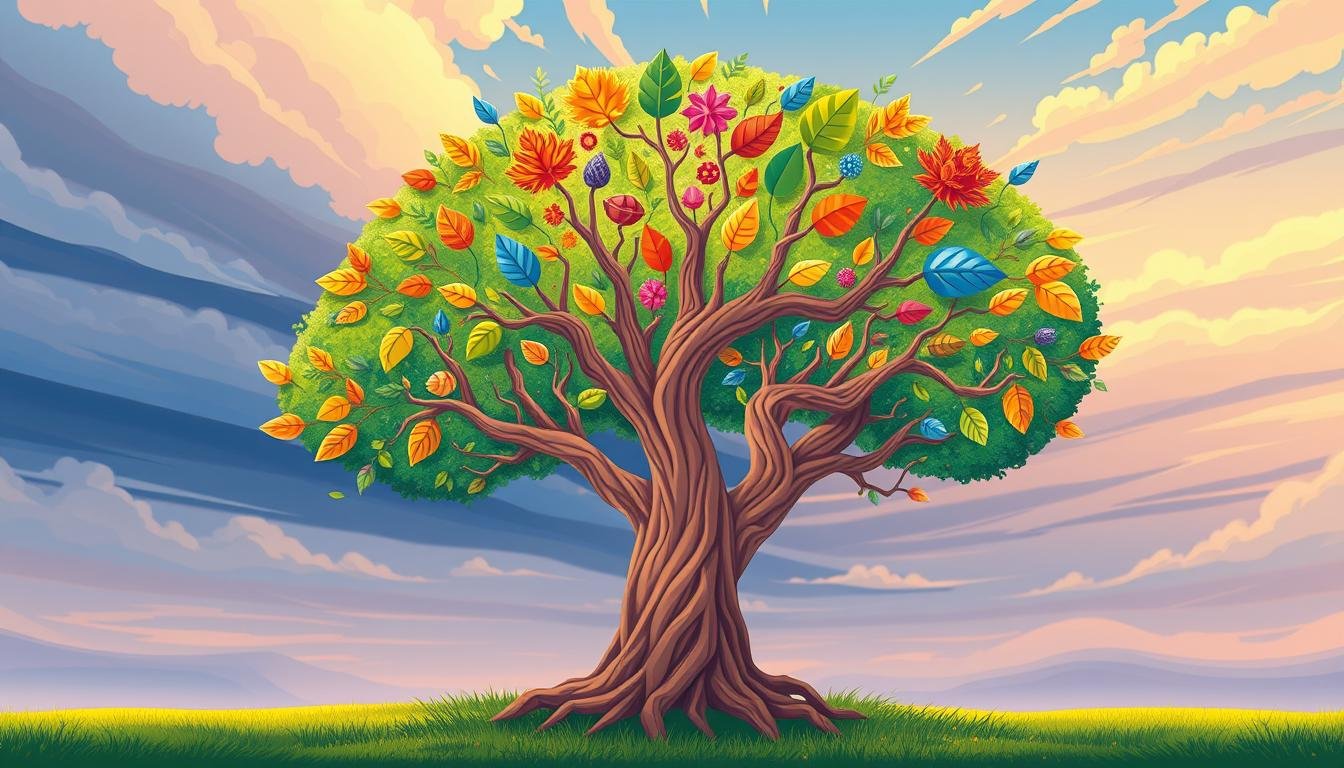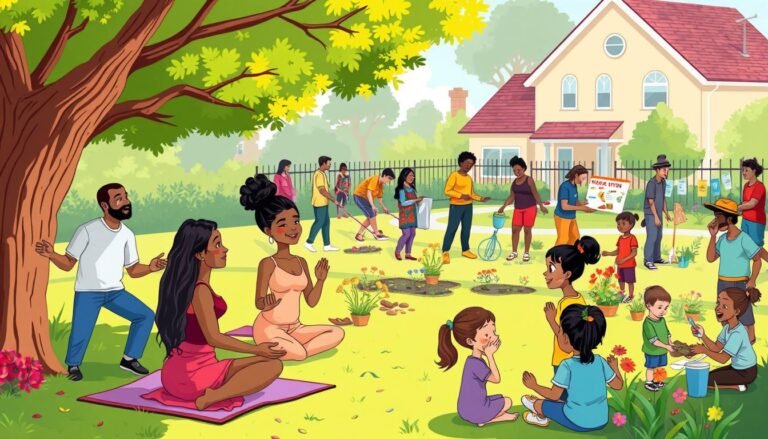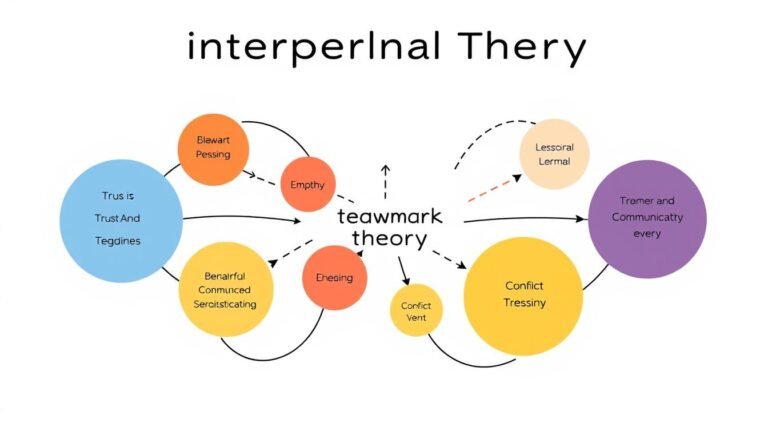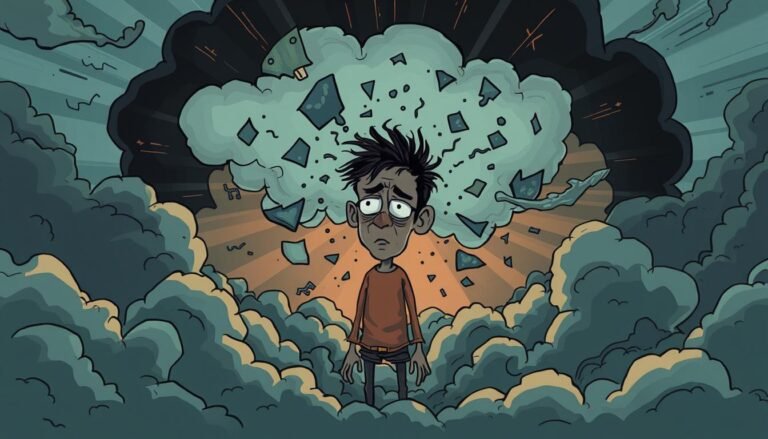Exploring Developmental Theory: Growth & Change
Have you ever wondered why children develop at different rates? Developmental theory gives us interesting insights into human growth. It shows how our minds, social skills, and emotions shape us from birth to adulthood.
In the early 20th century, child development became a field of study. It started with looking at abnormal behavior. Now, it covers many theories about how we grow, learn, and interact with others.
Freud’s psychosexual theory said our personalities are shaped by early experiences. Erikson built on this with his psychosocial theory, outlining eight stages of development. Theories like Piaget’s cognitive theory and Bowlby’s attachment theory have changed how we see human development.
As we dive into developmental theory, we’ll see how these views help us understand growth and change. We’ll look at cognitive milestones and emotional development. Each theory gives us a piece of the puzzle of human development.
Understanding the Foundations of Developmental Theory
Developmental theory is key to understanding human growth and change. It looks at how we grow mentally, emotionally, and socially from birth to adulthood. It uses theories like Piaget’s Stages, Erikson’s Psychosocial Stages, and Vygotsky’s Sociocultural Theory.
What is Developmental Theory?
Developmental theory gives us a framework for understanding human growth and learning. It tries to explain how our thoughts and mental states change. These theories help us see how people interact with and understand their world as they grow.
Historical Context of Child Development Studies
Until the early 20th century, children were seen as small adults. The rise of child psychology changed this view. Pioneers like Sigmund Freud and Erik Erikson started modern developmental theories. Their work led to a deeper understanding of childhood and adolescence.
Importance of Studying Human Growth and Change
Studying human development is very important for several reasons:
- It helps us see the growth children go through
- It shapes how we teach and parent
- It shows us about individual differences and trends
- It helps create support for different life stages
Knowing these theories gives us insights into both individuals and society. It helps us make environments that support healthy growth and tackle challenges at different times in life.
Key Aspects of Child Development
Child development is a complex process with many interconnected parts. Understanding these areas helps create supportive environments for healthy growth. Let’s explore the main components that shape a child’s journey.
Cognitive development focuses on how children think and solve problems. This includes memory, attention, and reasoning skills. Jean Piaget’s Cognitive Developmental Theory divides this process into four stages, from sensorimotor to formal operational thinking.
Emotional growth involves understanding and managing feelings. Attachment Theory, developed by John Bowlby, plays a crucial role here. It identifies three main types of attachment: secure, ambivalent, and avoidant. These attachments impact a child’s emotional development and future relationships.
Social development refers to how children interact with others. Lev Vygotsky’s Sociocultural Theory emphasizes the importance of social interactions in child development. It highlights the role of culture, language, and community in shaping a child’s social skills.
Physical development includes changes in body size, shape, and abilities. This aspect covers motor skills, coordination, and overall physical health.
Self-regulation is another crucial aspect of child development. It involves a child’s ability to control their thoughts, emotions, and behaviors. This skill develops over time and is essential for success in school and life.
Constructivism, a learning theory, suggests that children actively build their understanding of the world through experiences and reflections. This approach emphasizes hands-on learning and problem-solving.
| Developmental Aspect | Key Theory | Main Focus |
|---|---|---|
| Cognitive | Piaget’s Cognitive Theory | Stages of thinking and problem-solving |
| Emotional | Bowlby’s Attachment Theory | Types of emotional bonds and their impact |
| Social | Vygotsky’s Sociocultural Theory | Influence of social interactions and culture |
| Self-Regulation | Various theories | Control of thoughts, emotions, and behaviors |
| Learning | Constructivism | Building knowledge through experiences |
Sigmund Freud’s Psychosexual Theory
Sigmund Freud changed how we see child development. He showed how Unconscious Desires and Libido shape who we are.
Stages of Psychosexual Development
Freud found five stages of development, each linked to a body part:
- Oral (0-1 year): Satisfaction from sucking and biting
- Anal (1-3 years): Focus on toilet training
- Phallic (3-6 years): Genital awareness and Oedipus complex
- Latency (6-12 years): Dormant sexual feelings
- Genital (13-18 years): Mature sexual interests
Freud thought that not solving these stage conflicts could affect our adult selves.
Criticisms and Limitations of Freud’s Theory
Freud’s ideas are still debated. They’re not scientifically proven and mainly talk about straight development. Critics say it puts too much on childhood and sex.
| Criticism | Explanation |
|---|---|
| Limited empirical evidence | Freud’s theories are based on case studies rather than controlled experiments |
| Gender bias | Theory primarily focuses on male development |
| Overemphasis on sexuality | Attributes most behavior to sexual motivations |
Impact on Modern Developmental Psychology
Freud’s work still shapes psychology today. His views on Unconscious Desires and early life impacts are still studied and used in therapy.
Erik Erikson’s Psychosocial Theory
Erik Erikson’s psychosocial theory gives a detailed look at human growth from birth to old age. It highlights eight stages, each with a unique challenge that shapes who we become. These stages show how our social interactions and life experiences shape our minds.
The first stage is Trust vs. Mistrust in infancy. It moves to Autonomy vs. Shame in toddlerhood and Identity vs. Role Confusion in teens. Each stage has a conflict that, when overcome, brings important psychological strengths. For example, facing Identity vs. Role Confusion in teens helps build a strong sense of self.
Erikson’s theory is used in many areas. Mental health workers use it to understand and help people. Nurses and health professionals use it to support patients through big changes in life. Studies keep finding how Erikson’s stages help us understand our minds and feelings at different ages.
Source Links
- Influential Theories About How Children Grow and Develop
- Stages of Human Development: What It Is & Why It’s Important
- 1.5 Developmental Theories | Understanding the Whole Child: Prenatal Development through Adolescence
- Foundations of theory of mind and its development in early childhood – Nature Reviews Psychology
- Student Development Theory Cheat Sheet
- Your Ultimate Guide to Child Development Theories
- Child Development and Early Learning – Transforming the Workforce for Children Birth Through Age 8
- Freud’s Stages of Human Development: 5 Psychosexual Stages
- What Are Freud’s Stages of Psychosexual Development?
- Freud Developmental Theory – StatPearls
- Understanding Erikson’s Stages of Psychosocial Development
- Eriksons Stages of Psychosocial Development – StatPearls








